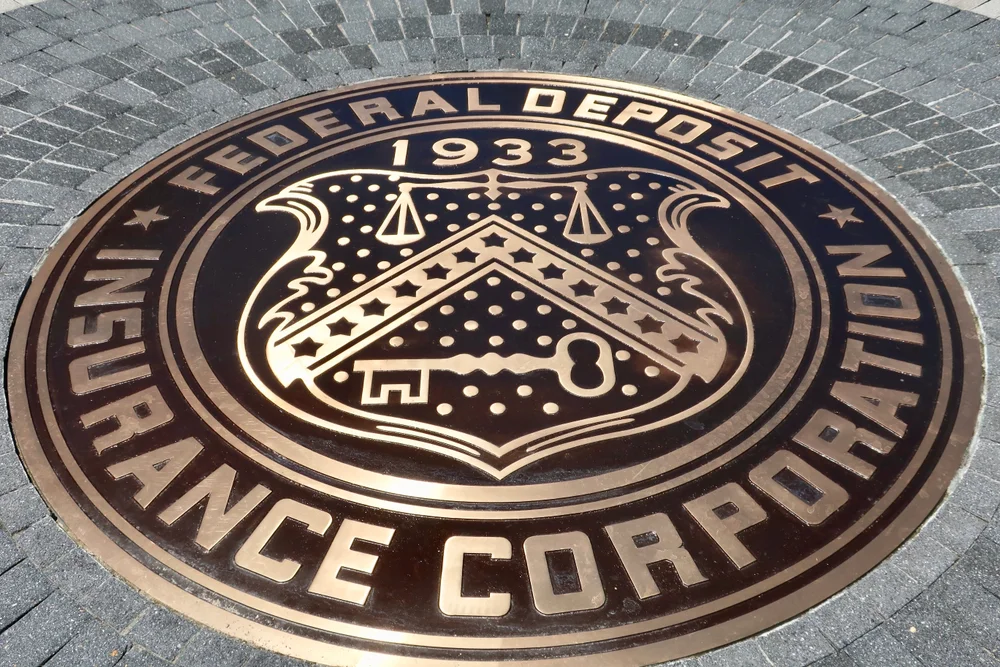
Stablecoin and the Feds
Stablecoins are providing an entire infrastructure layer to the economy on which property rights and transactions are built.
Get your digital wallets ready, because this week is Crypto Week! The House announced this moniker for the week of July 14, 2025, as it votes on three crypto-related bills. Perhaps most notable of the three is the Stablecoin Transparency and Accountability for a Better Ledger Economy (STABLE) Act.
Hot on the heels of the Senate's passage of the Genius Act, the STABLE Act provides a framework to regulate this fast-growing digital asset space. Stablecoins, cryptocurrencies pegged to assets such as fiat currencies and backed by reserves like U.S. Treasury bills, have gained significant popularity. These digital assets have a transaction volume greater than that of Visa and Mastercard combined. They are especially popular in the U.S. dollar-denominated form, which constitutes over 90 percent of the market. This popularity gives stablecoin the ability to revolutionize global finance, placing US dollars and T-bills at the center.
Asking what stablecoins mean for free markets is like asking what roads mean for free markets. Stablecoins are providing an entire infrastructure layer to the economy on which property rights and transactions are built. And that makes understanding the implications and ramifications of the STABLE Act crucial. As the influence of these cryptocurrencies grows, the STABLE Act stands poised to intervene with a regulatory framework that both offers clarity to and imposes constraints on free markets.
Centralization of Power: A Double-Edged Sword
A central feature of the STABLE Act is its emphasis on centralized federal control over the issuance of stablecoin. The primary Federal payment stablecoin regulator has the authority to approve stablecoin issuers, as outlined in Section 5. This requires all payment stablecoin issuers to seek federal approval. Federal preemption is enforced over state laws, as outlined in Section 7(e), allowing federal regulators to override state regulations that conflict with the Act.
By centralizing regulatory authority, this bill privileges bigger, incumbent firms at the expense of smaller, newer, entrepreneurial firms. For an industry that thrives on decentralization, it is dubious that centralization would be the best fit for any crypto regulation.
As with any centralization, there are massive trade-offs, and the stablecoin market is no exception. On the positive side, centralization brings regulatory clarity and consistency. This is crucial for the growth of an industry as fast-moving and complex as cryptocurrency. The Act’s clear guidelines for stablecoin issuers make it easier for entrepreneurs to understand how to navigate this emerging market and to price risks accordingly. Federal oversight also facilitates standardization, which helps streamline integration with existing financial systems. By ensuring all issuers meet uniform standards, the STABLE Act enhances market certainty, which will encourage investment and innovation within this framework.
In contrast, the STABLE Act’s federal control stifles the diversity of regulatory bodies that could allow for experimentation with innovative regulatory approaches in a market built on decentralization. With little provision for private regulators and limited space for state-level innovation, the Act risks reducing the opportunity for tailored policies that better address the needs of local businesses and innovators. Without competition among different regulatory bodies, it becomes more challenging to assess the effectiveness of federal oversight, leaving questions about whether it is truly the best fit for the dynamic and decentralized nature of the stablecoin space.
Barriers to Market Entry: Constraining Entrepreneurship
Once the Wild West of entrepreneurship, crypto businesses are now poised to become part of the formulaic mainstream. A significant part of that formula involves navigating regulatory requirements. The proposed bill creates significant barriers to entry for smaller players by restricting stablecoin issuance to a select group of entities, primarily banks and federally approved non-bank institutions. Section 3(a) of the Act prohibits anyone other than "permitted payment stablecoin issuers" from issuing stablecoins, effectively shutting out entrepreneurs without the resources to meet the regulatory requirements.
Entrepreneurs must navigate a federal approval process under Section 5, which places decision-making power in the hands of a few government agencies, such as the Comptroller of the Currency. This process is time-consuming and expensive, which makes it increasingly difficult for smaller companies to enter the market. Compliance requirements, such as maintaining 1:1 reserves and undergoing monthly audits, create a financial burden that places new entrants at a disadvantage compared to larger, well-capitalized firms.
The digital asset space has thrived on its open, decentralized nature, where anyone with an idea and limited resources can innovate. By imposing strict issuance rules, the STABLE Act risks concentrating the crypto market even more with Bitcoin, Ethereum, XRP and Tether dominating the space.
Already Captured: No Yield-Bearing Stablecoin Allowed
The STABLE Act’s centralized legislative framework removes the competition among regulators that could have helped limit regulatory capture. With fewer regulators, entrenched interests have a greater opportunity to exert influence over oversight decisions, ensuring that regulations benefit the status quo rather than promoting innovation or fairness. Without multiple regulatory regimes competing for trust or market share, there is less incentive for federal regulators to remain accountable to the industries they oversee.
Not only will regulatory capture likely be an ongoing issue with stablecoin legislation, parts of the STABLE Act are a result of outside influence. The provision in Section 4 that bans stablecoin issuers from paying interest or yield on their tokens raises concerns about market fairness. This provision was a direct result of lobbying from major banking institutions, which were eager to prevent stablecoins from directly competing with their own interest-bearing products.
There is no strictly economic reason why stablecoins should be prohibited from offering yield to their holders; after all, yield-bearing stablecoins already exist and have proven popular among investors. By restricting this option, the STABLE Act prioritizes the interests of large banks over those of consumers and innovators on this margin. Although this bill is a potential huge win for decentralized finance (DeFi), in Section 4, the legislators notably revealed their loyalties to traditional finance (TradFi).
Interoperability and Global Competitiveness: Expanding Market Reach
The STABLE Act has capitalized on one major benefit of centralized regulation by promoting the interoperability of stablecoins across borders, a move that could boost global competitiveness. This aspect of the bill facilitates the Trump administration’s delivery on its pledge to make America the “Crypto Capital of the World.” By ensuring that U.S.-denominated stablecoins can work seamlessly with international payment systems, the Act opens the door to greater global adoption of stablecoins.
As noted in Section 10, the Act calls for developing international standards for stablecoins, which would allow U.S. firms to compete more effectively on the global stage. For businesses, this provision is a significant benefit. If stablecoins can facilitate easier cross-border payments, U.S. companies will have a competitive advantage in international trade, expanding their reach and reducing transaction costs.
The STABLE Act’s centralized approach to regulating stablecoins introduces a critical tension between the need for clarity and the risk of stifling innovation. While the bill provides much-needed regulatory clarity, the centralization of decision-making into a few federal hands limits the diversity and adaptability of the regulatory landscape.
By preempting state laws and controlling the approval process for issuers, the Act not only limits competition among regulators but also suppresses the dynamic experimentation that has fueled much of the cryptocurrency industry’s success. If the bill passes without significant changes, we risk creating a regulatory framework that is overly focused on preserving the status quo and one that is disconnected from the needs of innovators and entrepreneurs who have traditionally thrived in a decentralized environment. That is neither good for the economy nor America’s ambition to lead the world in this area.
Julia R. Cartwright is a Senior Research Fellow in Law and Economics at the American Institute for Economic Research.
Economic Dynamism

The Causal Effect of News on Inflation Expectations
This paper studies the response of household inflation expectations to television news coverage of inflation.
.avif)
The Rise of Inflation Targeting
This paper discusses the interactions between politics and economic ideas leading to the adoption of inflation targeting in the United States.

Ignore 'Open Letters' From Economists
Don’t be swayed by “open” letters signed by well-known and well-respected scholars, experts, professors, and businessmen.

Demystifying the New Deal
Carola Binder reviews False Dawn: The New Deal and the Promise of Recovery, 1933–1947 by George Selgin

Texas Stands on Commerce
Clear limits on shareholder resolutions have made Texas a model of business certainty — and business is flooding in.

America Needs Its Hidden Champions
From imaging systems to next-gen GPS, small and midsized manufacturers are quietly rebuilding America’s industrial and defense backbone.






.jpg)



.avif)




